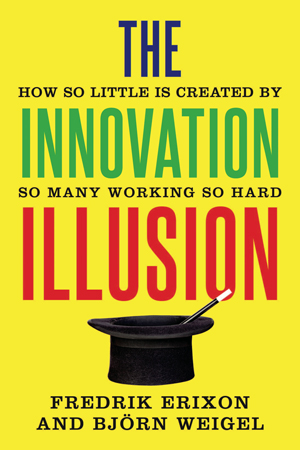Why Innovation Isn’t Enough
Featured excerpt from The Innovation Illusion: How So Little Is Created by So Many Working So Hard
Topics
Artificial intelligence, robotics, blockchains, reusable rockets, self-driving cars, genetic engineering — there is an unprecedented explosion of innovation going on all around us, and nowhere is it creating more froth than in the corporate sphere. And yet, as Fredrik Erixon and Björn Weigel point out in their new book, The Innovation Illusion: How So Little Is Created by So Many Working So Hard (Yale University Press, 2016), GDP growth, productivity, and corporate investment in the capitalist economies of the West are all on the decline.
Erixon and Weigel, both of the European Centre for International Political Economy, an economic think tank, peg this counterintuitive reality to “gray capitalism, excessive corporate managerialism, second-generation globalization, and complex regulations.” They contend that these “Four Horsemen of capitalist decline” have rendered large companies moribund and risk-averse, and thus have produced an environment in which innovation flourishes, but never generates a full measure of economic output.
In the following excerpt, the authors remind us that while innovations may produce unicorns that enrich founders and VCs, they can’t drive broad-based economic progress on their own.
An excerpt from Chapter 8 of The Innovation Illusion: How So Little Is Created by So Many Working So Hard (Yale University Press, 2016) by Fredrik Erixon and Björn Weigel
While it is easy to be impressed by what modern science labs and tech innovators create, the chief lesson from economic history is that the economic benefit of new technology has less to do with that. The economic power of innovation comes mainly from its adoption, not from its creation. And adoption of technology requires investment resources, entrepreneurship, and dynamic markets. The Western economy has moved in the wrong direction on all three counts.
For technology to be adopted extensively, someone has to channel it from the inventor to the market. And that someone usually has to increase investment and capital expenditure for the invention to reach an audience. For Voice over Internet Protocol (VoIP) to become the preferred technology of telephony, significant investments are needed in high-speed telecommunication infrastructure, for instance. The same logic also applies to human capital.

